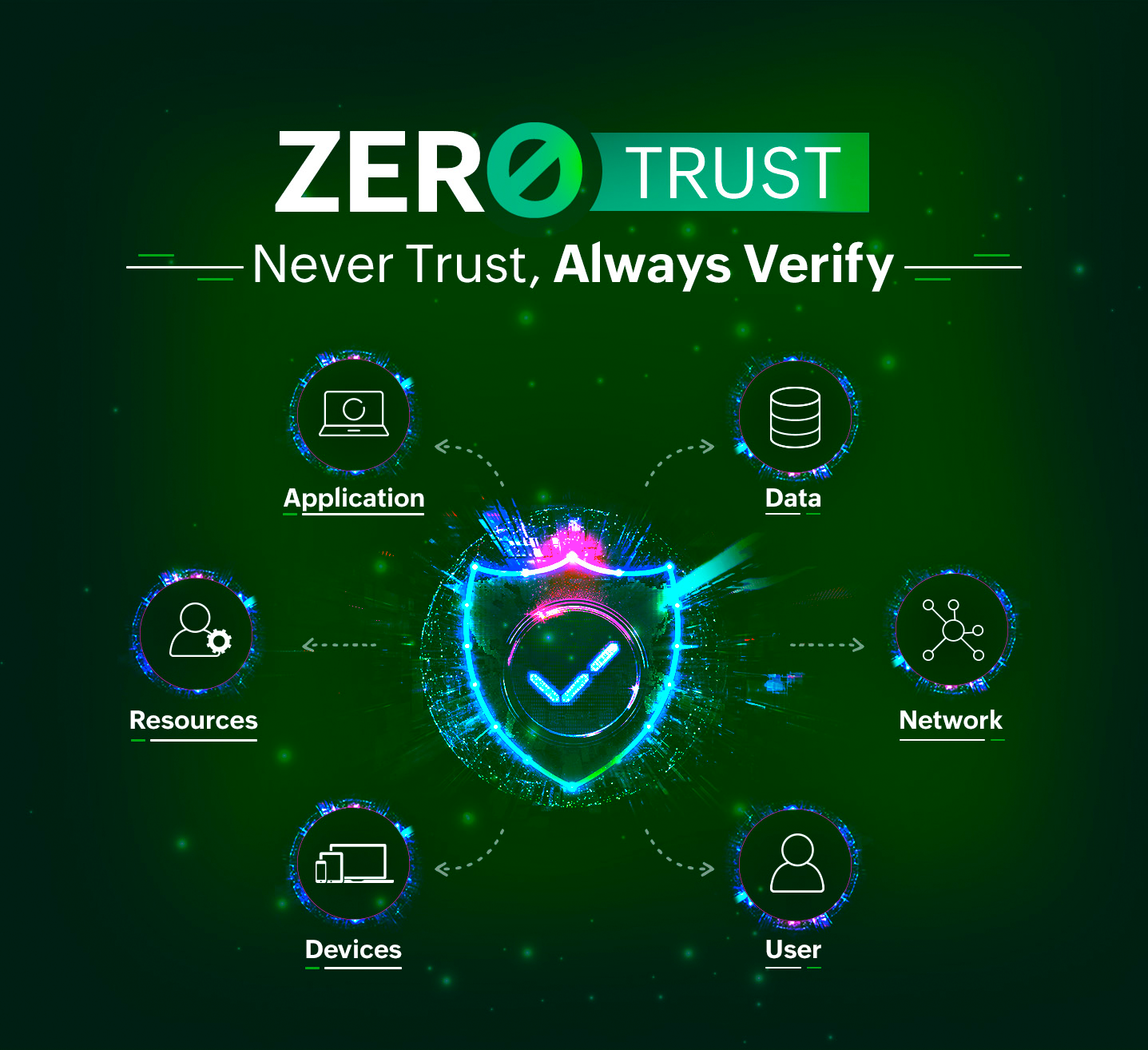Do you trust your organization's network? Do you think deploying perimeter-based security solutions such as firewalls or VPNs is enough? Do you trust your employees? Do you trust the devices used by them?
If your answer to any of the questions above is yes, then you might want to pause, rethink, and read this blog to gain a new perspective!
With exponential digital transformation taking place each day, the network perimeter is being redefined continuously. It has therefore become imperative for organizations to redefine their defense strategies with new security approaches.
Zero Trust is a security approach that works on the principle of never trust, always verify'. It emphasizes that no user or device or network can be trusted inherently, irrespective of location, i.e., within or outside the corporate walls.
In this blog, we'll introduce you to the basic principles of the Zero Trust model and some of the best practices that you must follow to build your own Zero Trust network.

The Zero Trust model aims to strengthen and armor organizations by helping them take a holistic approach towards a strong cybersecurity posture. This can be achieved when organizations follow different techniques and strategies as per their infrastructure's requirement and not just a standalone strategy. Some of the Zero Trust guidelines are as follows:
Microsegmentation is one of the most important aspects of the Zero Trust model. It is the process of breaking the network perimeter into small, secure zones that are more manageable. These zones are called micro-segments. Micro-segments, in comparison to large networks, are much easier to monitor, implement specific security policies for, and establish granular access and controls for. This, in turn, provides better visibility and access to individual network resources, applications, and data.
Microsegmentation ensures that the attack surface is as small as possible. In this way, it decreases the organization's chances of falling prey to cyberattacks. It prevents the movement of traffic laterally within the network, i.e., server-to-server, application-to-server, etc. There are multiple ways in which organizations can create micro-segments. For instance, organizations can create them based on location, privileged data assets, user identity (employees or third-party users), personally identifiable information, virtual machines, important applications, software, etc.
Provide authenticated and authorized access to all the users and network resources through security methods like multi-factor authentication (MFA). MFA requires users to prove and verify their identity using multiple authentication factors like the usual username-password combination, a fingerprint scan, and a code or one-time password (OTP) sent to their mobile device. Unlike two-factor authentication, MFA should comprise a minimum of three factors for authenticating a user. These three factors could be something the user knows (password), something the user owns (OTP on authenticator app), and something the user is (biometrics such as fingerprint).
However, it's also important for organizations to consider the fact that MFA can be bypassed by cyberattackers, which is why they must have strong MFA methods in place.
Single sign-on (SSO) provides the ability for users to sign on once with their credentials and have access to all of their applications. SSO works through the exchange of an authentication token between the application and the identity provider. Whenever a user signs in, this token is created and remembered to establish the fact that the user is verified. Any application or portal the user will attempt to access will first verify with the identity provider to confirm the user's identity.
SSO enables users to create and remember one strong password for their account instead of multiple ones. The approach also helps in avoiding password fatigue and decreasing the attack surface. It further ensures that no repeated passwords are used by users to access multiple portals and applications. From a security standpoint, SSO provides central visibility into all the user activities from a central location. It allows organizations to implement stronger password policies for the entire organization.
The principle of least privilege (POLP) is one of the core fundamentals of Zero Trust. It permits users to access only the data, applications, and services required to perform their jobs. Since users are the weakest link of any organization, this policy makes sure that they are given access to resources only on a need-to-know-basis. Some of the ways to implement POLP are:
It is important that all user activities are continuously monitored and audited. A proactive approach of looking out for any potential threat helps in preventing malicious attacks. The log data should be ingested by a SIEM solution, it should be further analyzed, and real-time alerts should be configured in case any unusual activity gets detected.
Monitoring devices with strict controls is also an integral part of the Zero Trust network. It is important to monitor the number of devices that have access to the network and check if they have been authorized to access the network resources. Organizations should also keep a track of unmanaged and managed devices, and make sure these devices are being regularly patched and updated. For BYOD and guest devices in the network, strict access controls and threat detection methods should be followed to lower the risk of an expanded attack surface.
So how do you start working towards creating a Zero Trust architecture for your own organization? Here are a few of the common yet quintessential practices that must be adopted to build a Zero Trust environment.
It's never too late to secure your network, so get started on your journey towards creating a safe and secure IT network for your organization. Adopt and implement a Zero Trust security approach to ensure restricted and secure access to your network and its components. Doing so will minimize your attack surface, thus reducing your exposure to cyberattacks.
A SIEM solution like ManageEngine Log360 helps organizations in maintaining a Zero Trust environment with its UEBA and CASB capabilities. Schedule a personalized demo and talk to our product experts to learn more about it.
You will receive regular updates on the latest news on cybersecurity.
© 2021 Zoho Corporation Pvt. Ltd. All rights reserved.